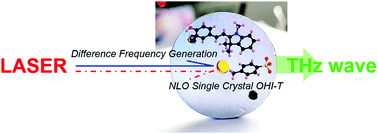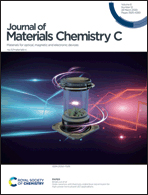Methyl substitution for noncentrosymmetric stacking: a promising organic single crystal for highly efficient terahertz-wave generation†
Abstract
Regulating secondary bonds in organic compounds is one of the important routes to design practical materials with excellent performances. However, controlling the molecular arrangement and spatial configuration by changing the limited substituent groups is still very challenging. Herein, two indolium-based (C19H20NO)+ crystals, centric OHI-CBS and acentric OHI-T, were synthesized and grown using an evaporation method. An intriguing structural change from the centrosymmetric (P21/c) to noncentrosymmetric (Cc) space group was obtained by a simple substitution of the chloro group by the methyl group. Theoretical calculations demonstrate that hydrogen bonds and π–π interactions make the main contribution to molecular spatial alignment. Meanwhile, the OHI-T crystal exhibits prominent nonlinearity of about 0.7 times that of the benchmark OH1 crystal, a large band gap (2.47 eV), a wide transparency range (504–2100 nm), and remarkably efficient output energy in the 0.1–20 THz region, making it a potential nonlinear optical medium for THz-wave generation. This work realizes rational crystal structural regulation through simple molecular substitution and provides a feasible design strategy for other organic optoelectronic functional materials.



 Please wait while we load your content...
Please wait while we load your content...